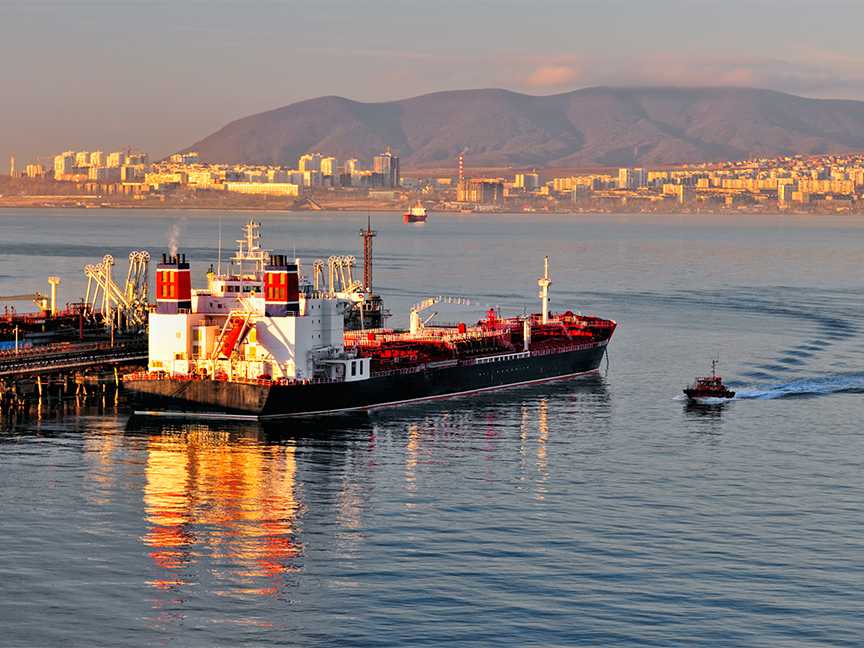
Global supply chains are unlikely to see relief from congestion, disruption, labor shortages and skyrocketing costs anytime soon.
That was the consensus among multiple industry experts who spoke at the TPM22 conference in Long Beach, California last week.
The topic of greatest concern was, of course, Russia’s invasion of Ukraine. Nariman Behravesh, former chief economist with IHS Markit, said the war in Ukraine will have multiple and possibly conflicting impacts on global markets and transportation. On one hand, it’s likely to dampen demand for goods, which theoretically would serve to alleviate some of the pressures being felt by ports, carriers and inland terminals. On the other, it will worsen supply problems, especially for oil, gas and wheat — three of Russia’s biggest exports — moving out of the Black Sea. A resulting rise in global energy prices will hit service providers and consumers alike. How all that will balance out in the end “is a good question,” Behravesh said.
Questions were all that the speakers at TPM22 had to offer, given the high degree of uncertainty posed by world events, including war in Ukraine, the lingering COVID-19 pandemic and economic convulsions.
Concerns of the moment center on rising inflation, caused in large part by rising energy and transport costs. In the case of the latter, surging demand for consumer goods, coupled with shortages of labor, have resulted in severe delays at major ports, terminals and distribution centers. The price of oil passed $100 per barrel for the first time in nearly eight years, and continues to rise. Behravesh sees $120 as “well within the realm of possibility,” with an “outside chance” of reaching $150, at least for a short while.
From the U.S. perspective, he is reluctant to describe that trend as an “energy shock,” when compared with the quadrupling of oil prices that occurred during the energy crisis of 1973.
In fact, Behravesh said, the current rise in inflation is less like that of the 1970s than the periods immediately following World Wars I and II, when markets experienced a huge release of pent-up demand for consumer goods, and manufacturers struggled to convert to peacetime production. In both cases, inflation spiked to around 20%, but came back down within a year.
What might fuel a new round of inflation is an upward spiraling of wages and prices similar to that of the early 1970s. Indeed, businesses are being forced to raise wages now in response to a shallow labor pool, with many people reluctant to re-enter the workforce as the pandemic subsides. But Behravesh doesn’t think that scenario will spur long-term high inflation either. A temporary increase is likely, he said, “but eventually it will fade.
What won’t go away anytime soon are the difficulties that manufacturers and retailers are having in fulfilling current consumer demand. Domestic distribution systems are struggling to meet a 25% rise in demand for durable goods over last year — a trend that Behravesh called “staggering. We’ve never seen anything like in recent years.
At the same time, merchandisers are moving away from “just-in-time” stocking strategies to create inventory buffers in anticipation of future supply disruptions. An estimated 75% of growth in the fourth quarter was attributed to inventory building, Behravesh said.
Notwithstanding strong economic performance in the U.S., the possibility of stagflation — a simultaneous recession and double-digit inflation — can’t be ruled out. Behravesh cited estimates that a continuation of the war in Ukraine could reduce U.S. growth by between .3% and .5%. The picture in Europe is likely to be even darker, with Germany already on the brink of recession.
Behravesh himself has a more optimistic view. “As demand slows, and some supply problems begin to resolve, we would expect inflation to begin slowing down, probably in the second half of this year or early 2023,” he said. “Markets do work, but it takes time. And it’s taking longer on supply adjustment than most of us expected.”
There remains the wild card of China, especially in light of Russia’s invasion of Ukraine. Should China become emboldened to take similar action against Taiwan, huge disruptions in the global economy and supply chains will occur, in part because of Taiwan’s dominant position as a supplier of microprocessors to the world. “It would be a catastrophically different scenario,” said Gary Cohn, former director of the National Economic Council and now vice chairman of IBM. “It would alter what we perceive the course of history to be.”
Even if that doesn’t happen in the near term, China presents a potential threat to global economic growth, Behravesh said. He described China’s economy as “a slow train wreck,” marked by a crash in real estate prices and home sales. Doubts also persist about the stability of China’s banking system. Behravesh predicted that China’s economic growth will slow to around 2.5% in the coming years, far below the robust numbers of the last 20 years.
Still, the combination of COVID-19 and the Russian invasion has clouded the future of the global economy and supply chains, while delaying relief from present conditions. Said Behravesh: “We are in a double-shock world.”







